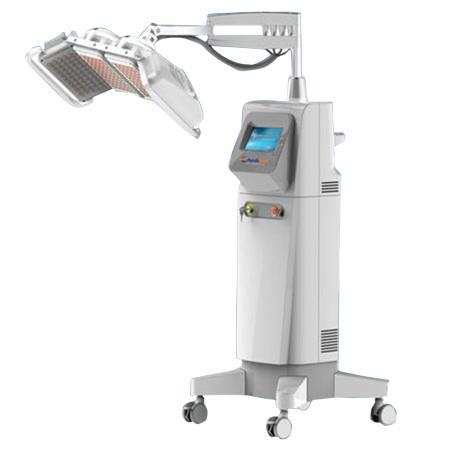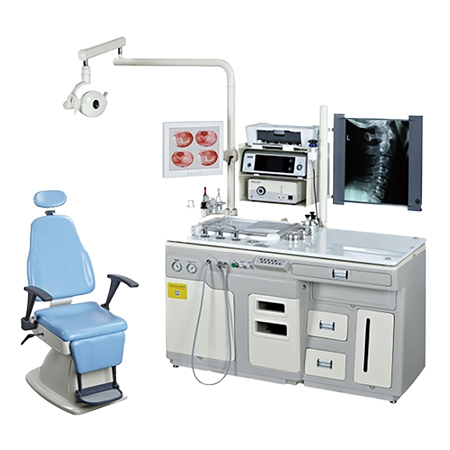Andrology-Therapeutic-Instrument

What is it?
Andrology therapeutic instruments are advanced medical devices specifically designed to provide effective and targeted treatments for various conditions related to male reproductive health. These innovative instruments are revolutionizing the field of andrology by offering non-invasive or minimally invasive solutions that address male infertility, erectile dysfunction, and other related disorders.
One of the remarkable features of andrology therapeutic instruments is their ability to deliver precise and personalized treatments. Equipped with cutting-edge technology, these instruments enable healthcare professionals to administer therapeutic interventions with exceptional accuracy, ensuring optimal results and minimizing discomfort for patients. They are designed to address a wide range of male reproductive conditions, providing tailored treatments that aim to restore fertility, improve sexual function, and enhance overall reproductive health.
These instruments offer a multitude of treatment options, customized to suit individual patient needs. For example, in the case of male infertility, these instruments can facilitate advanced techniques such as intracytoplasmic sperm injection (ICSI), which involves the injection of a single sperm directly into an egg to aid fertilization. They may also provide options for sperm retrieval procedures, such as testicular sperm extraction (TESE) or microsurgical epididymal sperm aspiration (MESA), to collect sperm from the testicles or epididymis in cases of obstructive or non-obstructive azoospermia.
In the realm of erectile dysfunction, andrology therapeutic instruments offer non-invasive treatments that aim to improve blood flow and enhance erectile function. For example, instruments utilizing low-intensity shockwave therapy (LiSWT) can stimulate blood vessel growth and improve penile blood circulation, leading to improved erectile function. These instruments can also provide vacuum erection devices (VEDs), which use negative pressure to draw blood into the penis, facilitating an erection.
Moreover, andrology therapeutic instruments prioritize patient safety and comfort. They are designed with ergonomic features, ensuring ease of use for medical professionals during procedures. These instruments often incorporate advanced control systems, allowing for precise and customizable treatment parameters tailored to individual patient requirements. This ensures that the treatments are administered in a safe and controlled manner, minimizing the risk of complications and optimizing patient outcomes.
Why?
Andrology therapeutic instruments are used for a variety of important reasons in the field of male reproductive health. Here are some key purposes and benefits of using these instruments:
1. Male Infertility: Andrology therapeutic instruments are employed to address male infertility, which is often caused by issues with sperm production, quality, or delivery. These instruments offer advanced techniques for sperm retrieval, such as testicular sperm extraction (TESE) or microsurgical epididymal sperm aspiration (MESA). These procedures allow healthcare professionals to collect sperm directly from the testicles or epididymis, enabling assisted reproductive technologies like in vitro fertilization (IVF) or intracytoplasmic sperm injection (ICSI) to facilitate fertilization and increase the chances of successful pregnancy.
2. Erectile Dysfunction: These instruments are utilized to treat erectile dysfunction, a condition that affects a man’s ability to achieve or maintain an erection. Andrology therapeutic instruments provide non-invasive treatments such as low-intensity shockwave therapy (LiSWT), which stimulates blood vessel growth and improves penile blood circulation. This leads to improved erectile function and may eliminate the need for medication or more invasive procedures.
3. Penile Rehabilitation: After undergoing treatments or procedures for conditions like prostate cancer or Peyronie’s disease, men may experience erectile dysfunction or changes in penile function. Andrology therapeutic instruments offer penile rehabilitation options, such as vacuum erection devices (VEDs), which help improve blood flow and maintain penile tissue health. These instruments aid in restoring erectile function, promoting tissue healing, and improving overall sexual well-being.
4. Research and Clinical Trials: Andrology therapeutic instruments play a vital role in advancing research and participating in clinical trials. These instruments provide standardized and controlled treatment methods, allowing researchers to gather data, evaluate treatment outcomes, and develop new approaches to male reproductive health. By participating in clinical trials, patients can access innovative therapies and contribute to the advancement of medical knowledge in the field.
5. Patient Education and Counseling: Andrology therapeutic instruments are valuable tools for patient education and counseling. They enable healthcare professionals to visually demonstrate treatment options, explain procedures, and discuss the potential outcomes and risks associated with different interventions. By actively involving patients in their treatment decisions, these instruments empower them to make informed choices about their reproductive health.
6. Follow-up and Monitoring: Andrology therapeutic instruments assist in the follow-up and monitoring of treatment outcomes. They allow healthcare professionals to assess the effectiveness of interventions, track progress, and make adjustments as needed. Regular monitoring using these instruments ensures that patients receive personalized and optimal care throughout their treatment journey.
How it works?
The working mechanism of andrology therapeutic instruments can vary depending on the specific instrument and treatment modality being used. However, here are some general principles and techniques commonly employed:
1. Sperm Retrieval: Andrology therapeutic instruments used for sperm retrieval, such as TESE or MESA, involve surgical procedures. These instruments are designed to access the testicles or epididymis, where sperm is retrieved. Under local or general anesthesia, a small incision is made, and the instrument is used to extract sperm directly from the desired location. The retrieved sperm is then processed and used for assisted reproductive techniques like IVF or ICSI.
2. Shockwave Therapy: Instruments used for shockwave therapy, such as low-intensity shockwave devices, deliver controlled and focused shockwaves to the penile tissue. These shockwaves stimulate angiogenesis (the formation of new blood vessels) and improve blood flow in the penile area. The instrument is placed on the skin of the penis, and the shockwaves are applied in a targeted manner. This therapy is typically administered over several sessions to achieve optimal results.
3. Vacuum Erection Devices (VEDs): VEDs consist of a cylinder that is placed over the penis and a vacuum pump that creates negative pressure within the cylinder. When the vacuum is activated, blood is drawn into the penis, causing an erection. The instrument typically includes a tension ring that is placed at the base of the penis to maintain the erection. VEDs can be used as part of penile rehabilitation or for temporary erectile support.
4. Control Systems and Parameters: Andrology therapeutic instruments often incorporate control systems that allow healthcare professionals to adjust treatment parameters according to individual patient needs. These parameters may include intensity levels, duration of treatment sessions, or specific settings related to shockwave therapy or other treatment modalities. The instruments provide precise control over the treatment parameters to ensure safety and effectiveness.
5. Imaging and Visualization: In certain cases, andrology therapeutic instruments may utilize imaging technologies to assist in the treatment process. For example, ultrasound imaging may be used to guide sperm retrieval procedures or to assess penile blood flow during shockwave therapy. Real-time visualization provided by these instruments helps healthcare professionals target the treatment area accurately and monitor progress.
Equipements
Lorem ipsum dolor sit amet, consectetur adipisicing elit. Architecto modi vel repudiandae reiciendis, cupiditate quod voluptatibus, placeat ad assumenda molestiae alias quisquam



